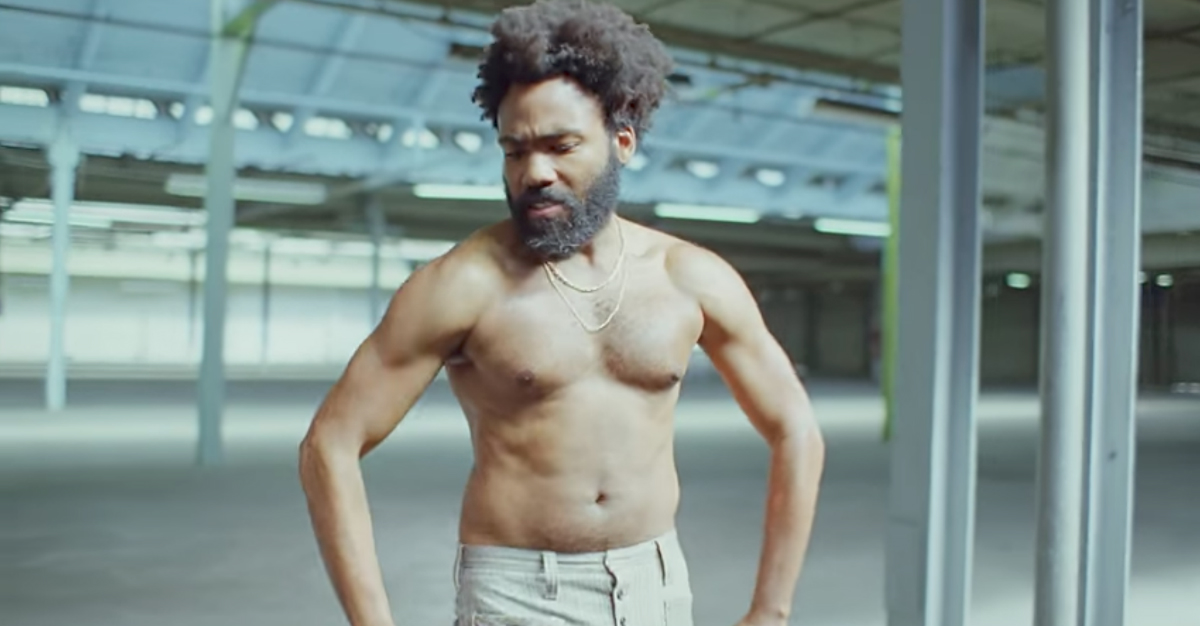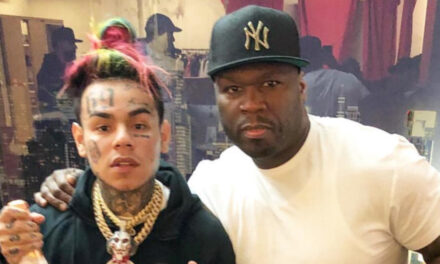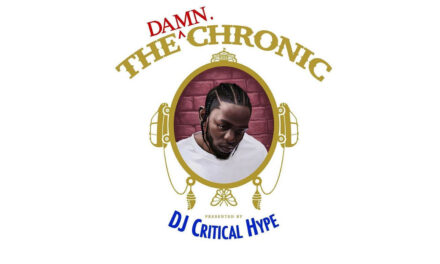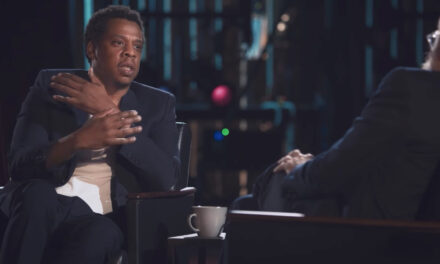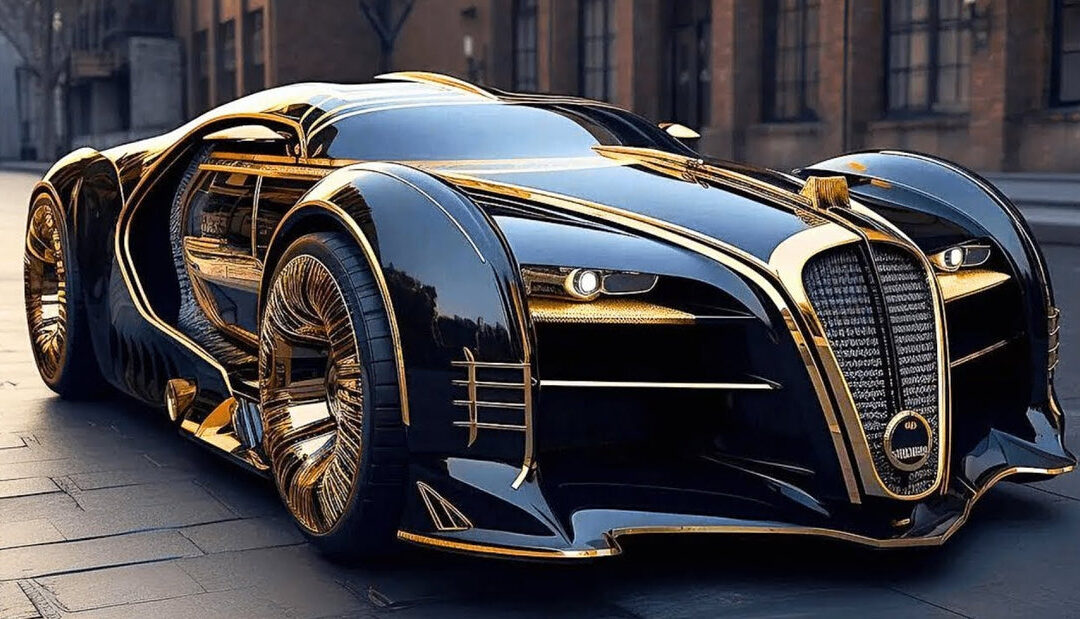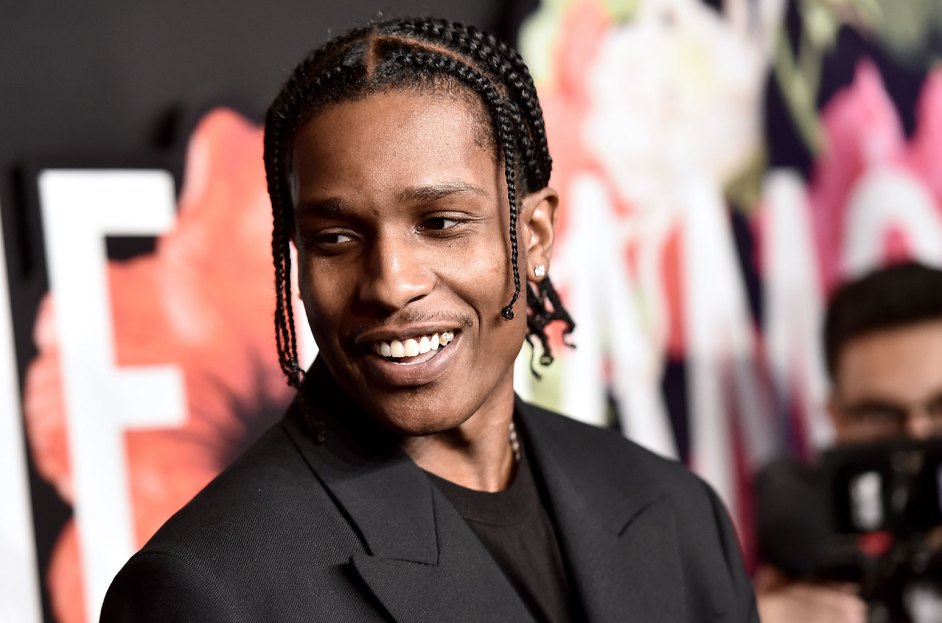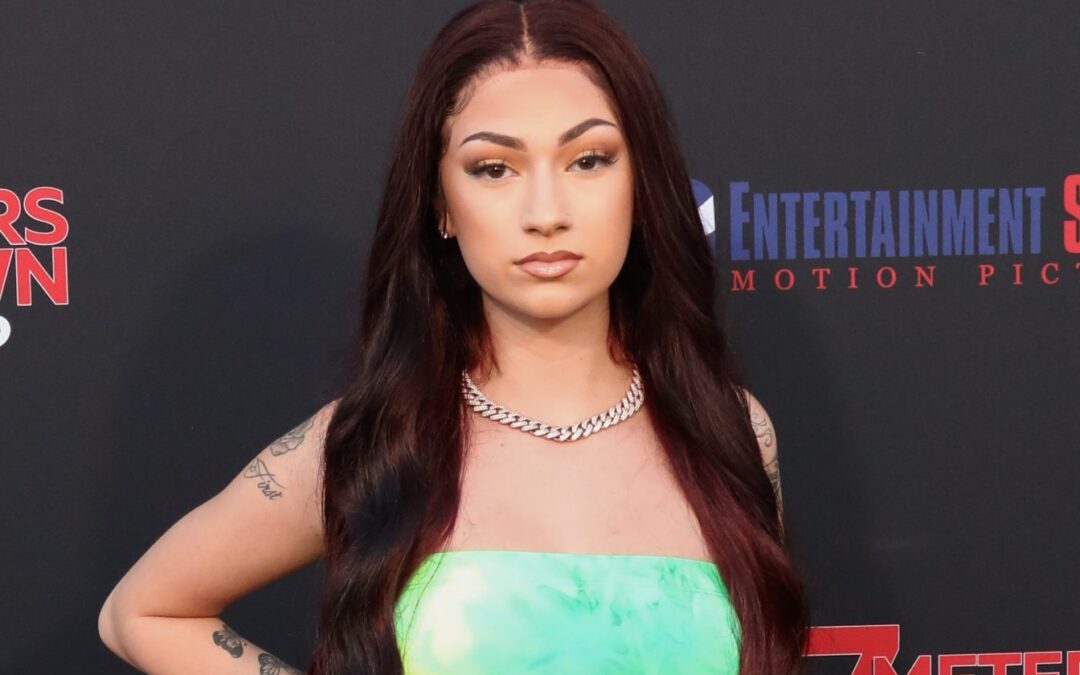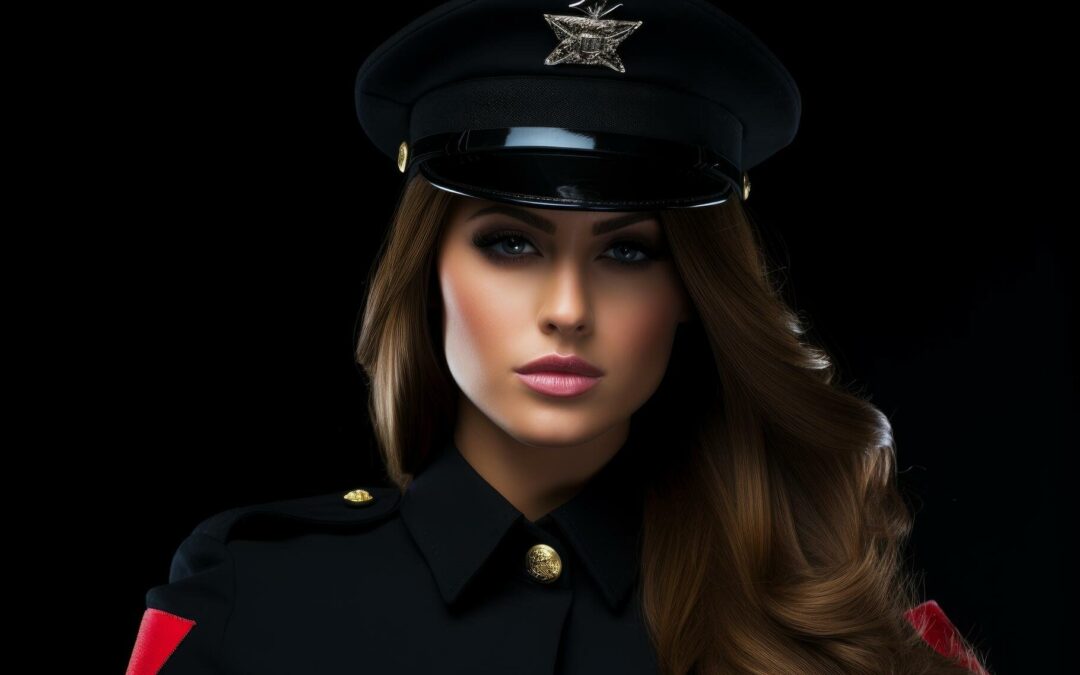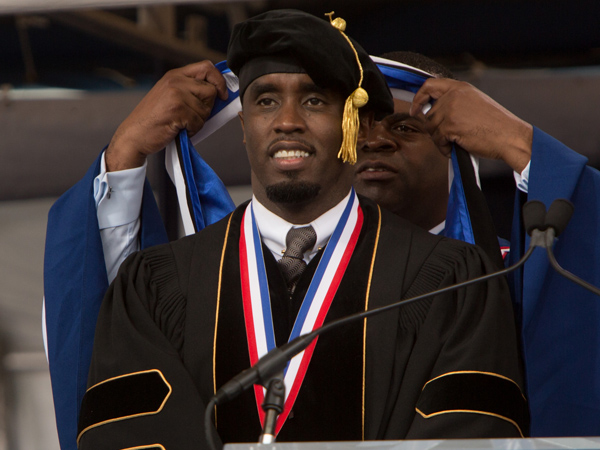[introImage id=125011 caption=”Credit: Rodin Eckenroth/Getty Images”]
I’m an actor, a writer, and a singer. Some people have described me as a triple threat, but I kind of like to call myself just a “threat”.
Donald Glover pauses his monologue to crack a wide smile as the Saturday Night Live audience gives a brief clap and cheer to his joke, but a potentially deeper meaning behind his jest may have gone over the heads of audience members that night, both in attendance and at home.
Donald Glover shouldn’t be a surprising guest to host SNL to anyone who’s been tapped into mainstream media as of late. He’s been writing, occasionally directing, and starring in the hit FX show “Atlanta” (which he created) and has a prolific career as a rapper-slash-singer under the moniker of “Childish Gambino”. Glover was also a prominent actor on the show Community a few years ago, and more recently, he played th role of Lando Calrissian in the new Star Wars spinoff movie, Solo: A Star Wars Story.
So, what might Glover be a threat to? One could describe it as easily as “the establishment” or “the powers that be”, and although the phrasing may seem a little corny, that’s exactly what it is. Granted, we can only speculate if he intended his quip to hold more weight under the surface, but his actions up to now have only proved his “dangerous” qualities to be real.
In fact, Gambino dropped a track the same day he hosted SNL in which his revolutionary qualities shone bright. The track, titled “This Is America”, has garnered nearly 20M views on YouTube within just two days of its release, and the number continues to grow. In his most politically-charged song yet, Gambino deals with topics of gun violence, media misdirection, and more in a music video that you might find yourself watching two or more times in an effort to unpack all of its nuances.
Childish Gambino wastes no time illustrating potent symbolism in the video. The opening scene shows a black man, played by music artist Calvin The Second, approach a guitar and start playing. A shirtless Gambino lurks in the background and begins to dance over to the guitar player’s chair, who is handcuffed, guitar-less, and with a bag over his head by the time he’s in the shot again. Gambino then pulls out a gun and shoots the man while striking a pose that many claim to be mimicking Jim Crow illustrations. After he is shot, a young black man comes to carry away the gun in a cloth, while two others come to drag away the body shortly after. This imagery alone could merit hours of discussion, but it all happens less than a minute into the video.
Shook by how fast I caught this reference. I haven’t seen a Jim Crow picture in years. Donald Glover did not come to play with y’all today. #ThisIsAmerica pic.twitter.com/5Xq4tLSJ7P
— Nichia (@nicky_furiosa) May 6, 2018
Dance goes on to be a central theme of the video, as Childish Gambino and a crew of young black kids dressed in what seem to be school uniforms jovially dance through chaos that unfolds around them with moves like BlocBoy JB’s “Shoot” dance and the South African “Gwara Gwara” dance. In fact, the dancing is positioned in a way that potentially distracts the viewer from said chaos, which could easily spark another long discussion. Is the dancing being used as a coping mechanism by the African-American community amid the challenges they face? Are dance trends being propagated by the media to sedate and distract from larger issues at hand? Could it be a mix of both, or something different entirely? Until Childish Gambino (or someone from his camp) steps forward to explain, it’s left up for the audience to interpret, but people are already drawing conclusions. The choreographer for the shoot, African dance teacher and choreographer Sherrie Silver, retweeted an assertion of Gambino’s intent.
Childish Gambino’s dance moves distracted all of us from the craziness that was happening in the background of the video & that's exactly the point he's trying to make…….#ThisIsAmerica pic.twitter.com/7o9e0XBGld
— Hurt Cobain (@D_Breezy_) May 6, 2018
The second overt act of gun violence shown in the video occurs right before the two-minute mark. Gambino dances into room where a gospel choir is singing, but quickly changes his charming demeanor to a disinterested one as he is handed an AK-47 and shoots the choir down with a single sweep of the rifle. Someone quickly comes and swaddles the gun in cloth as the bodies are left on the ground, which re-affirms the strong message on gun violence that was originally alluded to in the first shooting of the video. Perhaps that message is trying to reflect how desensitized the nation as a whole has become to gun violence, or maybe something else entirely. The element of ambiguity may even be intentional, as Gambino may prioritize a discussion of these topics being started rather than an explicit statement being made. Regardless, many who’ve seen the video have connected this scene to the 2015 mass shooting in Charleston, South Carolina, in which a white gunman massacred nine black churchgoers.
An interesting detail about the two shootings carried out in the video by Childish Gambino is that everyone who got shot was a black person making music. Additionally, the rioting that happens throughout the music video aren’t visible until his victims have been shot down. Gambino might be hinting at how the hip-hop industry has represented hip-hop as the dominant African-American genre of music, and that other artists may not be able to prosper, culturally or financially, if they do not assimilate. The Jim Crow pose that Gambino struck at the beginning of the video may be hinting at the notion that conforming to popular “standards” of hip-hop may be akin to conforming to outdated prejudices that ultimately cause destruction in the black community.
About thirty seconds later in the video, a group of kids are shown recording the commotion with their phones, and each is wearing a white cloth across their mouth, which resemble respirators. Just before the camera pans over them, Gambino spits the following line:
This a celly (ha)<br> That's a tool (yeah)
― Childish Gambino – This Is America
[ad type=”ad2″]
Some suspect the lyric to be a reference to 2018 shooting of 22-year-old Stephon Clark, who was shot 20 times after officers suspected that he pointed a gun at them. In reality, Clark was unarmed and had only his phone on him at the time of the shooting. The term “tool” in this case could refer to the slang for gun, but it also could be interpreted to mean a literal tool, as phones are popularly used to record acts of injustice, like police brutality.
Still, the onlooking kids are sitting above the ground on a balcony, where they are removed from much of the chaos below. Their physical distance, along with the white cloths across their mouths, may symbolize a certain sense of helplessness, where all they can do is record the situation at hand. Another interpretation may explain their cell phone use as the reason for their docility, since younger generations have been exposed to violence so much that it is no longer perceived as cause for outcry, but simply something to record.
In the following scene, Gambino can again be seen dancing with his original dance troupe, but when he makes the motion of pointing a gun, all the members of the troupe flash terrified faces and scatter. This raises two questions: why were the dancers scared, and why did Gambino make a gun-pointing motion? Gambino’s motion may have been a suggestion of militant resistance against police brutality (a cop car can be seen moments before), the music industry, or the corrupt power structure that exists in the United States altogether. The suggestion could even be described as an imagination; his eyes are closed as if he were imagining pointing a real gun. The fear of the dancers may be from their recognition of the entirely dangerous consequences these actions may imply.
Alternatively, one could interpret his gun motion to be a consideration of stepping into (or satirizing) the thug persona that is idealized in the hip-hop industry. The lyrics he raps at this moment are somewhat reflective of a trap star mentality, at list superficially: “I got the plug in Oaxaca, They gonna find you like blocka”. Gambino has already shot two different guns at this point, taking the lives of multiple other black people in the video. As Gambino has switched between violence and dancing, both could be seen as problematic, as they both either contribute to, or distract from, issues occurring in African-American society, particularly in the context of the music industry.
Rather than continue to dance or handle his imaginary gun, Gambino seems to compose himself as he pulls out a joint from his pocket and lights it up. He then climbs on top of a car with the joint, flicks it away, and continues to dance. The riots have stopped and most of the people are gone, and all that is left are old cars with the driver doors open and the emergency lights on. Gambino’s decision to light up may have been to calm himself after considering aggression, or as a distraction from the issues that made him pull the imaginary gun in the first place. Either way, his decision to keep dancing may illustrate a sense of complacency as he continues to entertain the audience with his moves, which is emphasized by the lyrics of the refrain: “Grandma told me, Get your money, Black man”. Just as violence and dancing are popular themes in hip-hop, so is drug use, so what seemed to be a moment respite may have instead functioned as a perpetuation of accepted standards of mainstream success in the music industry. The fact that he isn’t seen taking an actual hit before flicking the joint may support the idea that he was using it as a means of entertainment rather than its implied function.
The empty cars that surround him as he dances could be symbolic of traffic stops that have turned into the unjust fines, incarceration and/or murder of African-Americans. This has been an issue for so long that there is a tongue-in-cheek phrase that refers to this trend of injustice: DWB, or Driving While Black (a play on DWI). One such case that falls under this trend is the 2016 shooting of Philando Castile, who was shot during a traffic stop while allegedly reaching for his ID. Gambino’s carefree dancing on top of cars that may represent this facet of prejudice could symbolize how his stardom has allowed him to transcend some of the struggles that many African-Americans experience, so long as he keeps “dancing”. The idea that this is a distinctly American phenomenon is driven home by the fact that the three most visually prominent cars in the scene are red, white and blue, respectively.
The final scene of the music video shows Childish Gambino running down a dimly lit passage away from a mob that trails close behind him. Gambino’s face depicts true terror for the first time in the video, as opposed to his goofy and shallow expressions he paraded through the majority of the song. Many have interpreted the closing scene to be a reference to “the sunken place” from the movie Get Out, directed by Jordan Peele. If this is indeed what Gambino is referencing, he may be suggesting that his actions throughout the music video were out of his control and influenced by an external force. Gambino might be suggesting that he’s trying desperately to resist assimilation into mainstream culture, and that he is in risk of doing so as soon as he lets off the gas.
The Sunken Place means we're marginalized. No matter how hard we scream, the system silences us.
— Jordan Peele (@JordanPeele) March 17, 2017
Although it’s emphasized in the music video for “This Is America”, That same resistance was present in the skits Glover performed at Saturday Night Live. While both of his skits were still lighthearted and humorous, both dealt with serious issues affecting the U.S. The first skit, titled “A Kanye Place”, is a parody of the new movie A Quiet Place. The skit involves a small group in danger of being picked off by blind monsters that find victims only with sound. The group gets smaller and smaller as members can’t help themselves from talking about Kanye’s tweets, until the final member is attacked by the monster. In the same way that Glover’s dancing in “This Is America” was a distraction from issues that lie below the surface, “A Kanye Place” might suggest the impracticality and unsustainability of being consumed by sensational media, which might distract and sedate the public in the same way his dancing does.
The other skit from the night, titled “Lando’s Summit”, features Glover playing the role of Lando Calrissian, a role that he recently filled for the movie Solo: A Star Wars Story. In the skit, Lando holds a summit of all the black people in the galaxy, but the turnout is remarkably low. Lando comments that he expected the attendance to be in the thousands, but only four people were at the summit. In this skit, it’s likely that Glover is alluding to the lack of racial diversity in certain industries, like entertainment. Even though the skit’s tone is overall a lighthearted one, it could definitely be seen as a catalyst to spark discussion on the issue.
Even in his hit show Atlanta, Donald Glover doesn’t shy away from the discussion of critical topics either. Atlanta has dealt with subjects like sexuality, race, and mental health, all within just two seasons on air. As Glover continues to make waves in movies, shows, and music, one could expect his voice and to grow louder and his influence to grow stronger. Glover may be a major catalyst for change in American culture in the coming years, and if anyone has an aversion to such change, then they could assuredly consider Glover to be a “threat”!

